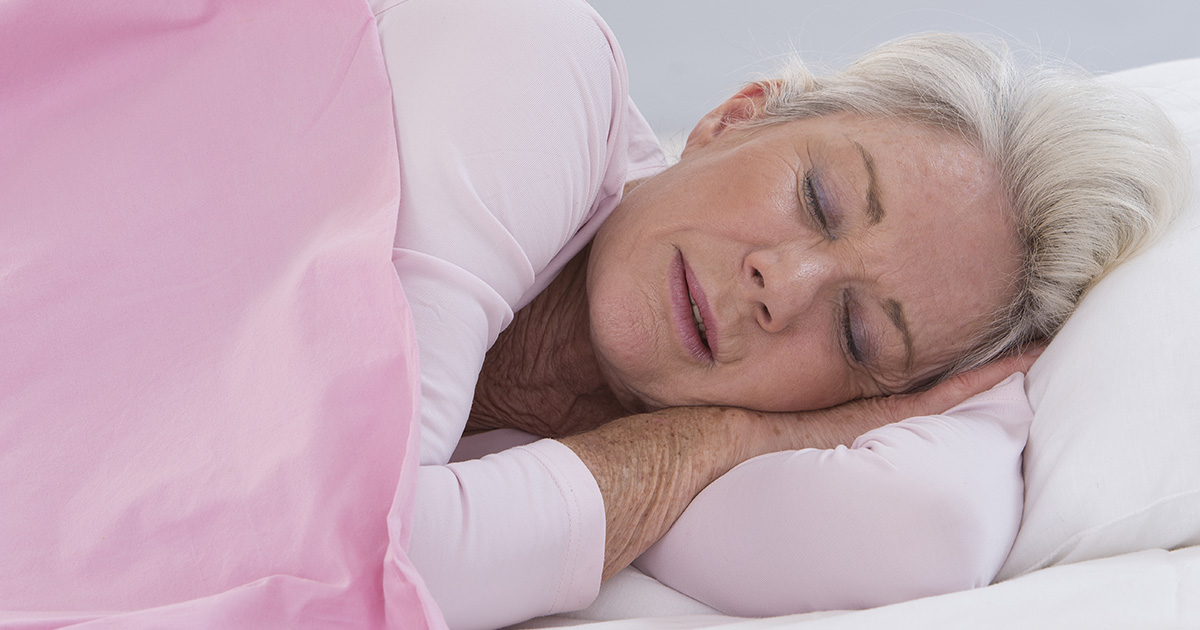The Woolcock Institute of Medical Research

Sleep: The new fountain of youth?
Is 60 the new 40? Thanks to modern medicine and healthy lifestyles, many older people have expectations for continued health, an active lifestyle and ongoing career progress well into their 60s. However, as populations age, neurodegenerative disease is becoming an increasing problem.
What would ageing look like if sleep neuroscience could provide similar solutions for brain ageing to those we now have for a range of physical issues?
“It would be a longer, more active and more switched-on life, wouldn't it?” says Dr Angela D’Rozario, a sleep neurophysiologist and research leader at the Woolcock’s Centre for Chronic Diseases of Ageing (CCDA). “It’s not just about how long we live for, though, is it? It's about quality of life.”
Her work at the CCDA and Macquarie University is concentrated on those whose brain cognition is affected by sleep and respiratory conditions. “We want to give people with chronic disease an extra 10 years of good quality life and bring them back up to that benchmark of where a healthy person would be. Our research also applies to people without chronic disease who have sleep problems and therefore are at greater risk of brain ageing. Our focus is on understanding this risk and providing an anti-ageing sleep elixir to slow down or even reverse neurodegeneration.”
UNDER THE LENS
Dr D’Rozario’s current research is focussed on where the need is greatest and on building an understanding of brain regions that can be targeted to provide better sleep and better brain health.
“Our research explores sleep from a neuroscience lens – looking at the brain in more detail than we've ever been able to before using some of the exciting technologies that we now have. We can now use high density electroencephalography (HDEEG) to look at the whole cortex for long periods of time and that’s led to a shift in the way we view sleep. It’s shown that our brains aren't just asleep only or awake only – it’s much more nuanced than that. And that the sleep that we're getting is different in different parts of the brain.”
It also means that researchers can gain a better understanding of what the broader functional roles of sleep are. So, they can look at things like depth of sleep in certain parts of the brain in relation to sleep-disorders and sleep deprivation.
Want to stay up to date with our research on sleep and respiratory conditions?
Sign up to our monthly newsletter
OLD QUESTIONS, NEW TOOLS
“Old school tools and ways of looking at sleep information don’t allow us to easily differentiate between patients. An example is people who have sleep-disordered breathing – one is sleepy the next day and one isn't, but they have the same severity of sleep-disordered breathing. Why is that? On paper, they look the same. We now have more detailed ways to look at sleep and what the consequences are for brain function and quality of life,” Dr D’Rozario says.
By bringing together different neuroimaging modalities – MRI in tandem with EEG – researchers have found that waste products which accumulate in the brain from neurons working are “flushed out” in a pulsating pattern during sleep. Current studies have shown that slow wave or deep sleep may be critical to this process.
“If you don't have good deep sleep, those waste products will be accumulating in the brain. Of course, there's still much we don't know about these functional processes but we’re doing things now that weren’t possible 10-20 years ago.”
“Ultimately, with all these millions of data points we get from an HDEEG sleep study which has 256 electrodes instead of six and samples the brain’s electrical activity 500 times a second for eight hours, you can identify regions of the brain where there are abnormal activity patterns. This requires our research group to have expert computing and data science support.”
TAILOR-MADE TREATMENTS
“Identifying the ‘anatomy’ of abnormal brain activity is not enough. What comes next is the big challenge. We’ve just received a high-definition neuromodulation device in the laboratory which means we can target regions of the brain to boost sleep. We need to test whether that translates to improved brain health outcomes. Because what we're talking about here is actual, real people whose lives will be improved by what we do.”
As medical treatment shifts into the personalised health era, Dr D’Rozario believes there could be a range of solutions for sleep problems which are identified as having a neurobiological basis because no one treatment will be right for everyone, even if it’s the same disorder.
“We’re going to need different targeted interventions. What they are? They could be pharmacological, they could be neuromodulation devices that send a particular frequency to a localised area of the brain, they could be other new non-invasive ways to manipulate the sleeping brain’s electrical activity.”
Through their research program, sleep neuroscientists at the Woolcock are on their way to finding these novel solutions and growing knowledge about the sleeping brain like we’ve never had before.










